The day before the aforementioned Diosa Centéotl announcement, the major activity on my dance card was the Festival de los Moles “all you can eat” buffet in the beautiful setting of the Jardín Etnobotánico (Ethnobotanic Garden). To the accompanying sounds of Oaxaca’s state marimba band, blue, yellow, white, and red corn tortillas were placed on a comal; beer, aguas, and mezcal were offered and poured by an attentive wait staff; and appetizers plated with quesillo, molotes, tacos filled with guacamole and chapulines, and more were placed before each of the hundreds of attendees.
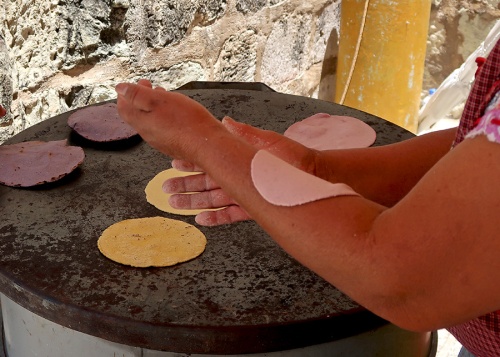
After what seemed like an eternity, the signal that all had been waiting for — the tin foil lids were removed from the cazuelas to reveal 19 different kinds of mole from 19 different restaurants. The stampede began! There is no way possible to taste them all, but I had scoped out a few in advance — Estofado from El Regio, Mole de Platano from El Tendajon, Mole de Castilla from my friends at Tierra Antigua, and Celia Florian’s Manchamanteles from Las Quince Letras. Blogger buddy Chris was sitting next to me and so we also tasted off each other’s plates, made more trips to the cazuelas, and I lost track of all that I had eaten. But of course I found room for the traditional leche quemada and tuna (cactus fruit) nieve (sorbet) for dessert. By the way, an added bonus to the event is sharing the experience with the friends old, new, and temporary at the tables-for-twelve.
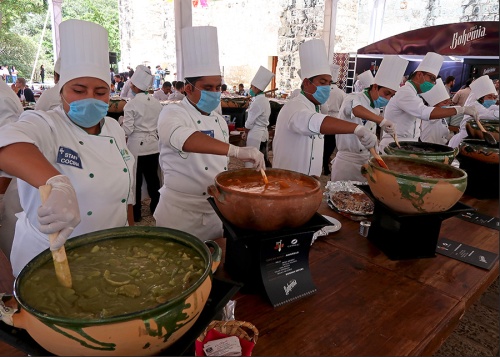
I bade Chris farewell and attempted to hurry home to change my clothes (yes, I’d spilled on my dress) before heading off to an exhibition opening. But, silly me, after nine years of living here, I should know better — there is no rushing in Oaxaca! Turning onto Macedonio Alcalá, I heard music and ahead of me could see the tops of monos and marmotas.

I was stopped dead in my tracks by one of the most colorful religious processions you will ever see. Honoring their patron saint, Santo Domingo de Guzmán, Tehuanas and their guys and band, danced their way down the street. Slowly navigating the jam-packed sidewalk, while being pelted with candy thrown to bystanders, I eventually was able to duck up a side street and make my way home. But, what fun along the way!

Clothes changed, I managed to arrive (almost on time) at the inauguration of “Flores y Cantos” at the Museo Rufino Tamayo — an exhibition that asks us to consider “Nezahualcoytl’s age-old challenge to create something beautiful and meaningful with our lives.” This multimedia exhibition, conceived of by Carolyn Kallenborn, envelopes the senses — ethereal sights; soothing music and comforting sounds of birdsong, rain, waves, and wind; and a celebration of the beauty and creativity of humans, then and now. Carolyn asks us to contemplate the legacy our ancestors passed on to us and how we want to be remembered when we are gone.

As one of two primary pieces in the exhibit, accomplished embroiderer Miriam Campos, from San Antonino Castillo Velasco, was commissioned by Carolyn to embroider a tree onto silk organza (above). With moving images of nature passing through its sheen and translucency, it was of this earth, yet not of this earth. For the other, Carolyn again collaborated with master weaver, Erasto (Tito) Mendoza on the truly spectacular tapete of corn that reaches from its roots of gold up into a swirling sky. The video images running across it, gave it a sense of movement. I returned again five days later.
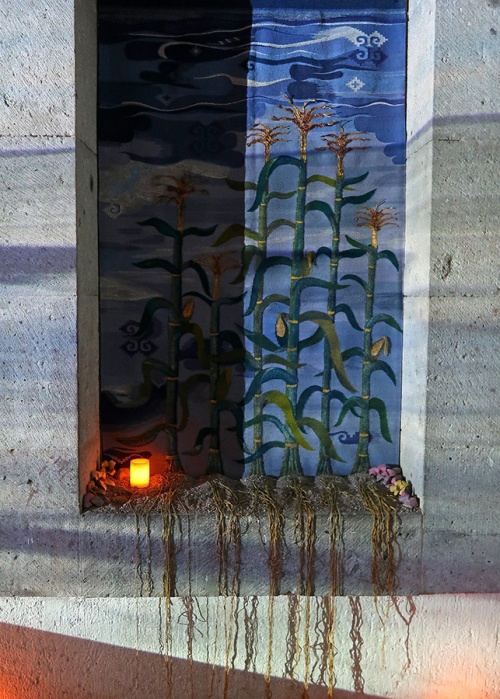
On Wednesday, prior to my second visit with “Flores y Cantos,” at the enthusiastic urging of Henry Wangeman (Amate Books), I made a bee-line to the Museo de los Pintores Oaxaqueños (MUPO) for the recently opened, “Endemismo” exhibition — a significant and stunning show that explores the biodiversity endemic to this area. Located along the border of Oaxaca and Puebla, on July 2 the Tehuacán-Cuicatlán Biosphere Reserve was recognized as a Cultural and Natural (Mixed) Heritage of Humanity site by UNESCO.

Filling both floors of the museum, and the brainchild of Nancy Mayagoitia, the show incorporates the work of twenty painters and photographers — each providing a new perspective on this old land in the Tehuacán-Cuicatlán Biosphere Reserve. I love the painting above by Cecilio Sánchez and entitled Paisaje de Cuicatlán (Cuicatlán landscape). It seems as if the eyes of this ancient land are watching to see what we do with this unique and precious place. (Click to enlarge the image and see the eyes.) And below, I couldn’t resist posting an image of Raúl Herrera’s, “El baño del colibrí Huitzilopochtli atl” from the exhibition — as every morning I watch the hummingbirds bathe in my fountain. Another exhibition to return to.
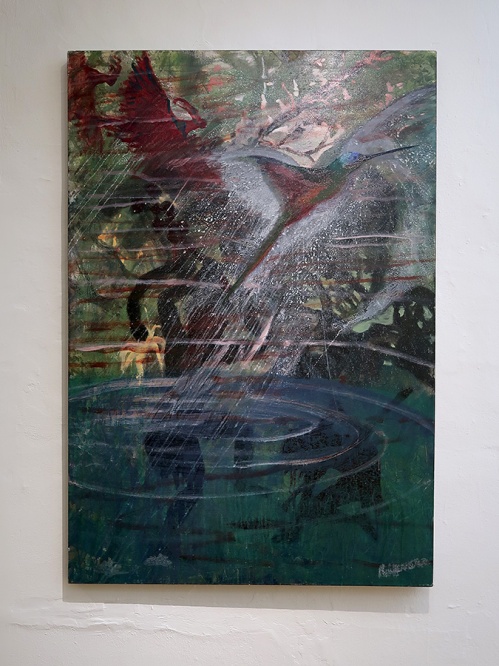
Given that I began this post with food, it only seems appropriate to end it with The Semana de los Antojos — a week of morsels of deliciousness to satisfy one’s (food) cravings — which opened July 24 under a colorfully decorated tent in the Plaza de la Danza. The aromas wafting onto my terrace beckoned and I followed.
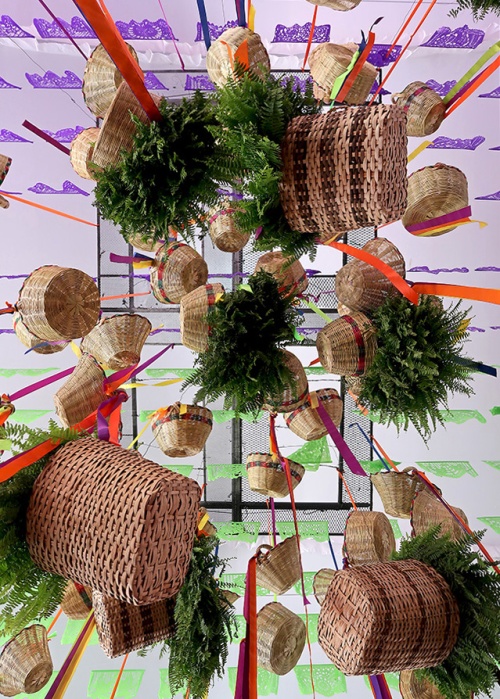
50 booths offering regional “comfort” food — garnachas from the Istmo (my current craving), tacos, tamales, tortas, tlayudas, empanadas, barbacoa, carnes asadas, you name it! And to wash it all down, tejate, tepache, pulque, chocolate, and aguas frescas. Oh, and did I mention desserts? Nieves, cookies and other sweets, and (hot off the presses) buñuelos.
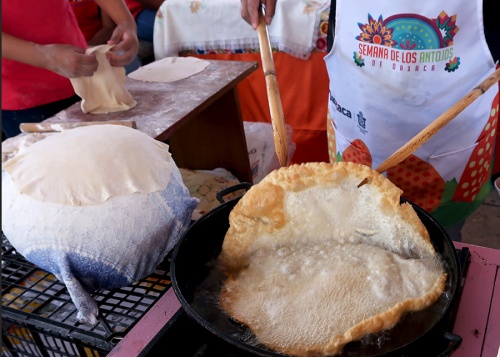
No rest for the weary — but I wouldn’t have it any other way!
Read Full Post »






























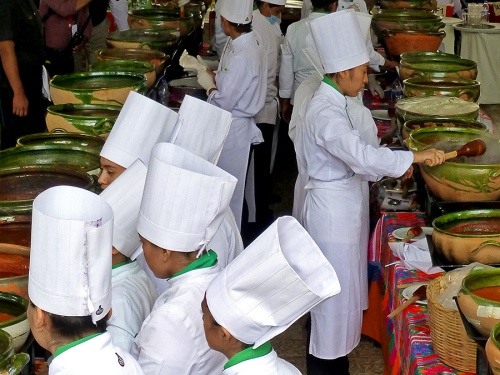
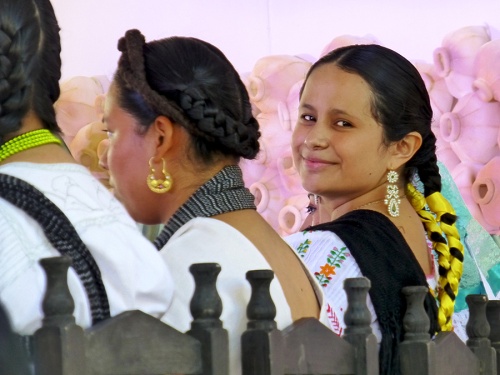
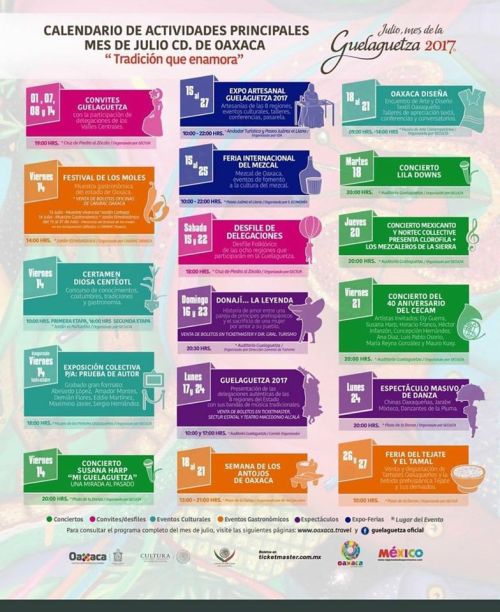
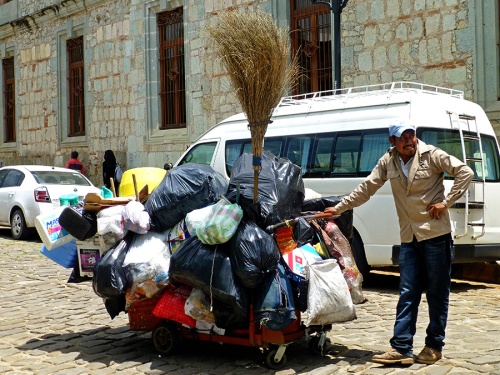

















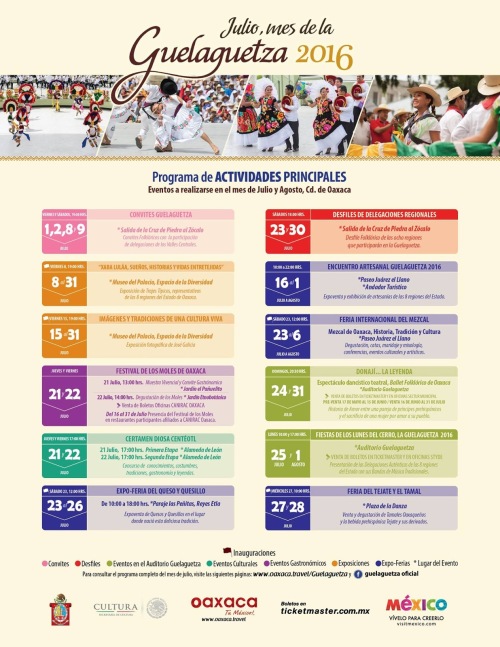
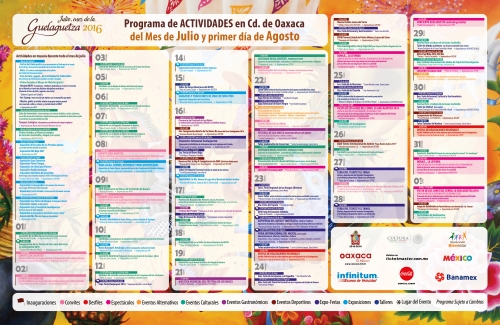































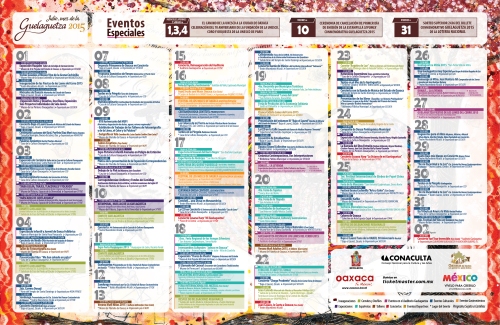


 Mexican Peso Converter
Mexican Peso Converter